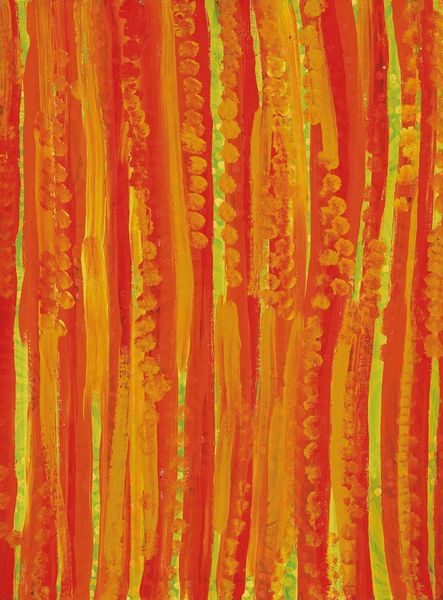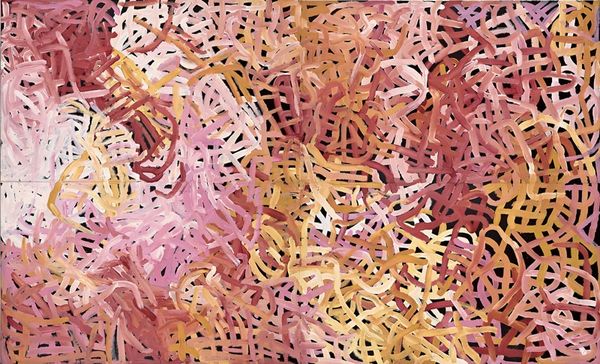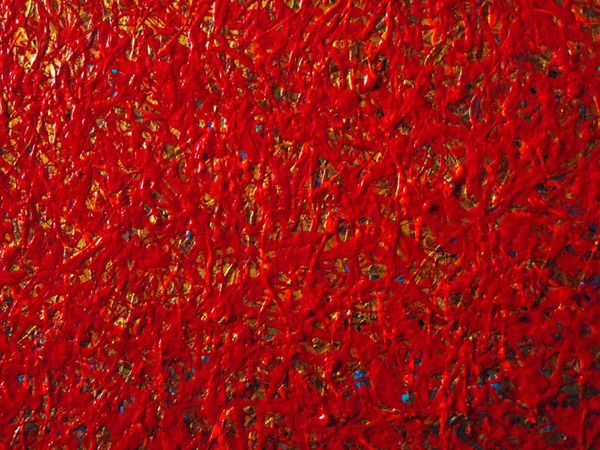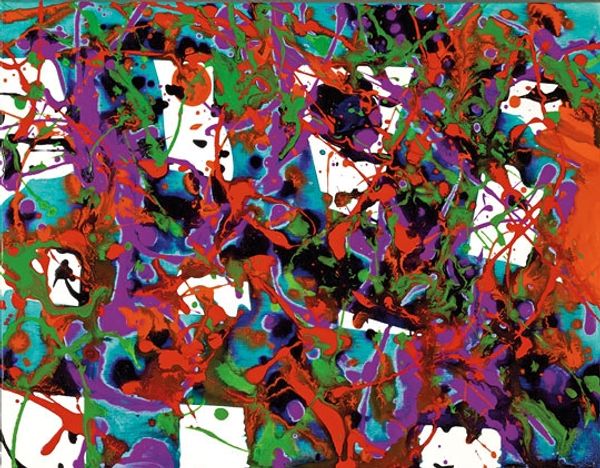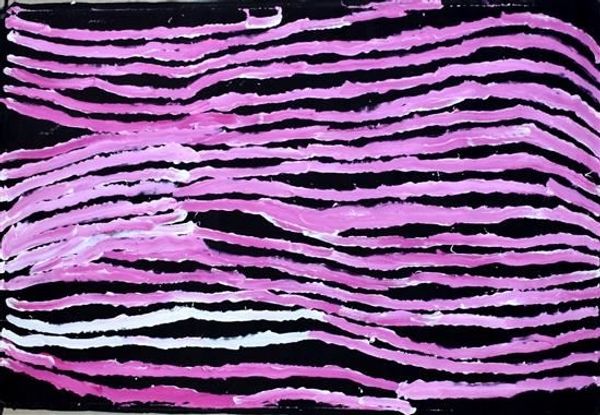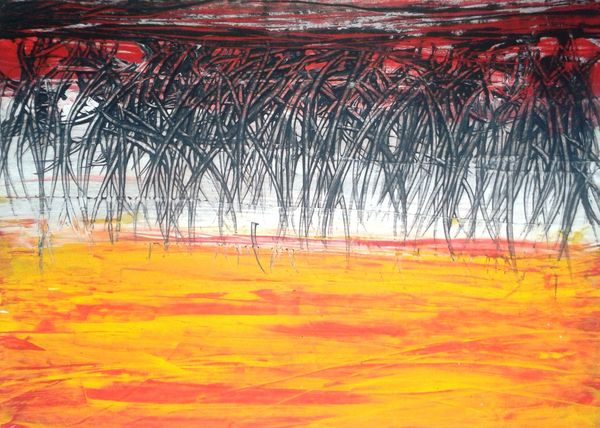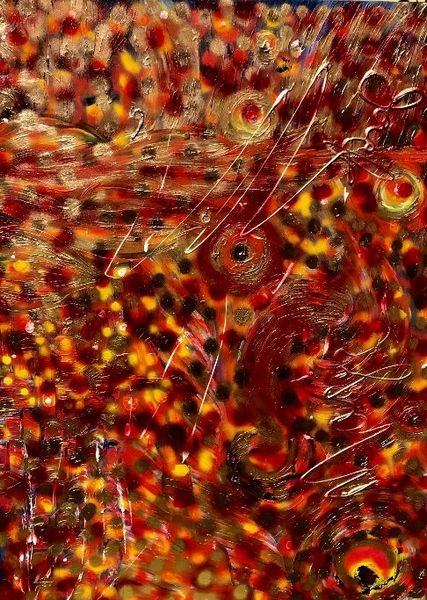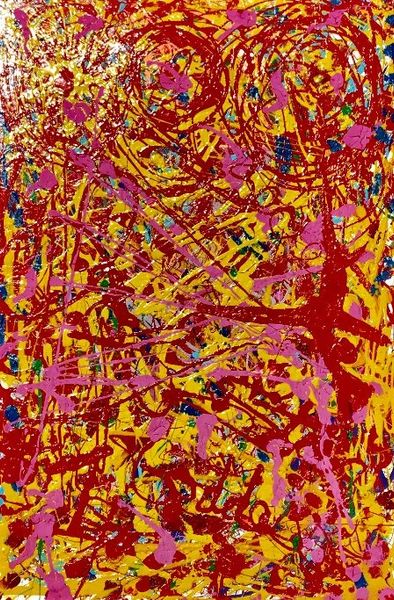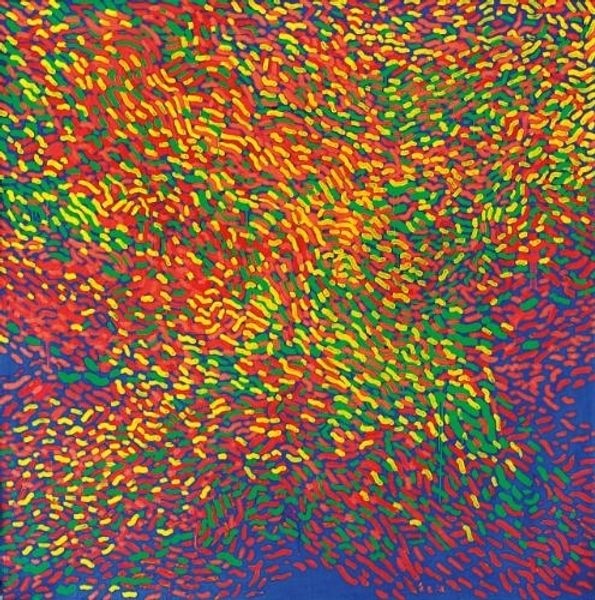
Copyright: Stanley Boxer,Fair Use
Editor: Here we have Stanley Boxer's "Heatscreambeat" from 1985, rendered in acrylic, ink, and impasto. The texture is so intense; it’s almost sculptural! What do you see in this piece beyond the material bravura? Curator: I see a dialogue with Abstract Expressionism, particularly in its emphasis on process and the artist's gesture. But beyond that, I wonder about the socio-political context of 1985. The AIDS crisis was escalating, Reaganomics were in full swing, and there was a pervasive sense of unease. Editor: So, you think the seemingly chaotic application of paint might reflect that cultural moment? Curator: Precisely. Think about the title: "Heatscreambeat." There's a tension there, a kind of ecstatic release mixed with something darker. Is it a scream of pleasure or of pain? The layering of materials, the almost aggressive texture—it all speaks to a society grappling with complex emotions and anxieties. Consider how Boxer might be subverting traditional notions of beauty and harmony to reflect these societal tensions. What feelings does this color evoke in you? Editor: I see what you mean. The color is warm, like skin, but it’s also agitated, almost feverish. So you're saying that abstract art can still carry a powerful social message, even without depicting recognizable figures or scenes? Curator: Absolutely. Abstract art often reflects the unspoken, the unsayable. It gives visual form to collective anxieties, desires, and struggles. It allows us to engage with history on a deeply emotional level, revealing intersectional undertones we might otherwise miss. Editor: I’ve definitely learned to look at abstraction in a new light. Thanks! Curator: My pleasure. Art invites us to question our assumptions and engage in meaningful dialogue.
Comments
No comments
Be the first to comment and join the conversation on the ultimate creative platform.

